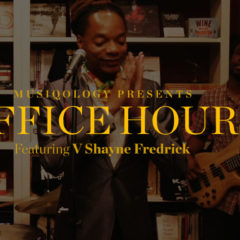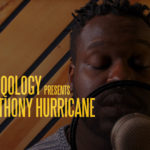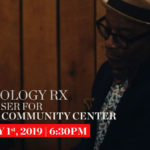Nothing New is MusiQology’s latest recurring series. Written by Penn PhD candidate Ben DuPriest, this collection of essays debates the utility and danger of proclaiming music “new” (or “old”) within a larger historical and political frame. With a focus on contemporary recordings labeled “jazz” for a variety of reasons, DuPriest unpacks the politics of that label and an ongoing debate over the utility of new-ness.
What has been is what will be, and what has been done is what will be done; there is nothing new under the sun. -Ecclesiastes 1:9
The title of saxophonist Marcus Strickland’s 2016 album, Nihil Novi, is a vulgate paraphrase of King Solomon’s famous nihilistic reflection, quoted above. Translated, the title means “Nothing New,” but Strickland’s invocation is neither ironic nor self-deprecating; he takes Solomon’s words not as cause for artistic surrender, but as inspiration. “People have to be careful when they call something new,” Strickland says in press materials for the record. “I think about what’s around me instead of trying to create something new. Everything is inspired by something else.”
This ethos is played out in the album’s remarkably varied and referential stylistic profile, which includes a constantly shifting array of sounds, sometimes directly recalling a diversity of artists and styles from the past that Strickland reveres. As such, the album raises an interesting set of questions about music marketed as ‘new jazz’ today. To the artist, the music is new primarily in the newness of its relation to that which already exists.
Strickland’s music is not alone in this ambiguity of newness; pianist Robert Glasper and bassist Esperanza Spalding have also released albums that make bold statements about what it can mean—and what it takes—to make new jazz in 2016. Each of these albums traverses a specifically diverse sonic landscape, prodding (sometimes violently) at the boundaries of jazz convention and negotiating the music’s past, present, and future in evocative new ways. These types of challenges to the boundaries of jazz style have long sat at the tipping point of what constitutes ‘new’ for this music – a music that is always-already hyper-aware of its past, its need to eschew that past, and its ostensibly imminent demise. It is out of the tensions of these seemingly paradoxical concerns that new art continues to emerge. These sounds raise the perennially nagging question, though: is it still jazz?
This series will be about new jazz in 2016 and beyond, but one important common denominator in the albums that will be discussed is an intentional non-devotion to any single genre, including, most notably, jazz. Glasper, Spalding, and Strickland all do specific stylistic and/or rhetorical work to remain undefined by jazz or any other music. Nevertheless, they are categorized as such, and most of the conversation that circulates about their music inevitably considers the ways in which they are (or are not) jazz, hip hop, rock, blues, R&B, early 20th century Hungarian art music, etc. etc.
The evasion of categorization is not at all new, of course, nor is it exceptional to jazz musicians. The phenomenon of the crossover artist has been around for a while, primarily as a mechanism of industry sales. For contemporary artists, though, it may be more productive to view the criss-crossing, mish-mashing, and re-imagining of generic boundaries as a mechanism of transgression – progressively transgressing the seemingly inevitable hegemonies of monolithic musical categorization, which are not necessarily just the stuff of musical style.
American music, particularly black American music, has a history of being listened to through the mediating ideology of determinative authenticities. This ideology is powerful. It creates regimes of style that produce hegemonies of certain genres, such that black music was, at a given point in time, indexically authentic (for some, valuable) inasmuch as it could be sonically related to the blues, jazz, hip hop, or whatever was considered most ‘real.’
Black music is thus presumptively historiographically organized into periods in which authenticity was determinable by the sonic proximity of a music to a given genre. It is here that the contentious politics of racial representation inspire discourses about musical style that are eminently political. Hence, for example, Nicholas Payton’s claim that the idea of ‘jazz’-as-such is a mechanism of colonialism and should be left behind by black America.
We the listeners are, of course, complicit—ever-compelled to hear new sounds solely in the context of the past, forcing the act of listening to be always-already referential. It is the listener’s disposition (or, mode of listening – the ways in which we approach the act of listening) that dictates whether we say “That sounds like Miles,” “That sounds like 70s prog rock,” or, “This is or is not jazz,” rather than “That sounds like something new that’s never existed before.” As such, it should be no surprise that artists like Glasper, Strickland, Spalding, and others perennially work to eschew genre demarcations, or at least to challenge generic conventions. Not only does it arm the artist against stylistic hegemonies of categorization, it is often the locus of the elusive quality of ‘newness.’ And the privileged listener benefits; this is the work that keeps us on our toes, keeps us listening.
To borrow from Strickland, there is nothing is new. New music is a new manifestation of that which came before, and the ‘new’ is new only in the way it engages with the old or the other. New jazz, here, emerges from the tensions and negotiations between these paradigms of past and future, self and other.
Beginning with these three albums, this forthcoming series of writings will explore these tensions and negotiations as they are played out in the context of new jazz releases. Of course, these ideas are not solely applicable to jazz music, nor to something called American music, or black American music; the singularity of their activity lies in the specific sounds that the musicians make, and the ways in which we listen to them. It is in the space between these acts that this discussion dwells.
Ben DuPriest is a dissertating Ph.D. student in Ethnomusicology at the University of Pennsylvania. His work examines the entanglement of musical pasts and presents in the American South. He is currently conducting ethnographic fieldwork and historiographic research on the blues and blues communities in North Mississippi. His project examines the idea of musical heritage, the presence of divergent historical consciousnesses, and the mobilization of these phenomena towards constructions of community and self by local and non-local people. He previously earned an MA in historical musicology and a BA in Music at the University of Georgia in Athens, Georgia, where he lived, trained, and worked as a drummer and a line cook.

 Share On Facebook
Share On Facebook Tweet It
Tweet It








